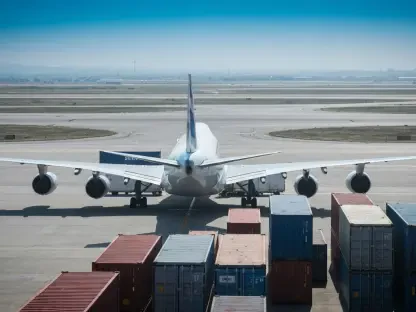Welcome to an insightful conversation with Rohit Laila, a veteran in the logistics industry with decades of experience in supply chain management and delivery. Rohit’s expertise and passion for technology and innovation make him the perfect guide to help us navigate the complex fallout from the collapse of the U.S. de minimis exemption. This policy shift, set to take effect on August 29, 2025, is reshaping the landscape for small e-commerce and logistics companies worldwide. In this interview, we’ll explore the implications of losing this duty-free threshold, the challenges and opportunities it presents for smaller players, and the long-term effects on global trade dynamics. Let’s dive into how this change is disrupting the industry and what it means for businesses and investors alike.
Can you walk us through what the U.S. de minimis exemption was and why it played such a critical role for e-commerce businesses?
Absolutely. The de minimis exemption allowed goods valued under $800 to enter the U.S. without paying duties or dealing with heavy customs oversight. It was a game-changer for e-commerce, especially for small businesses, because it kept shipping costs low and delivery times fast. Think of it as a shortcut—sellers could ship directly to customers without the burden of tariffs or complex paperwork. This was huge for industries like fashion and electronics, where low-cost items dominate online sales. Without this exemption, many small players wouldn’t have been able to compete with bigger retailers on price and speed.
How are small e-commerce companies being hit hardest by the end of this exemption?
The impact is brutal for small e-commerce firms. They’re now facing tariffs on every single import, no matter the value, which drives up prices significantly. On top of that, they’ve got to deal with customs bonds and detailed documentation—stuff they often don’t have the resources or expertise to handle. This can lead to delays, penalties, and frustrated customers. Many of these companies relied on the exemption to keep their margins tight, so they’re now scrambling to absorb costs or pass them on to buyers, which risks losing their price-sensitive customer base.
What specific challenges are small logistics providers facing as a result of this policy change?
Small logistics providers are in a tough spot too. With the exemption gone, international postal services have started suspending shipments to the U.S. because the rules around duty collection are unclear. This means fewer parcels to move, which directly hits their revenue. Plus, operational costs are climbing as they need to invest in tech upgrades for tracking and customs compliance. Margins are getting squeezed, and for smaller players without deep pockets, it’s a real struggle to keep up with these sudden changes in the game.
Are there any potential upsides or opportunities for e-commerce and logistics firms amidst this disruption?
Yes, there are definitely some silver linings for those who can adapt quickly. Companies that offer solutions like U.S.-based warehouse storage or compliance software stand to gain. For instance, third-party logistics providers, or 3PLs, can help e-commerce brands by managing bulk shipments and pre-landing inventory to sidestep some of the tariff issues. Tech startups focusing on automated customs tools are also in a sweet spot. I’ve seen a few agile firms already pivoting to offer these services, and they’re starting to carve out a niche in this chaotic landscape.
What should investors be focusing on when evaluating small-cap companies in e-commerce and logistics right now?
Investors need to look at a company’s ability to navigate this new reality. First, check their compliance readiness—do they have systems in place to handle customs paperwork without hiccups? Also, consider if they’re diversifying supply chains, maybe moving operations to places like Vietnam or Mexico to dodge some tariffs. And keep an eye on the legal challenges to this policy; a court ruling could delay the exemption’s end, which might buy some firms time. Ultimately, the winners will be those showing flexibility and foresight in their strategies.
How do you envision the long-term impact of the de minimis exemption’s collapse on the global e-commerce market?
In the long run, this change is going to reshape global e-commerce in a big way. We’ll likely see a shift toward regional supply chains as companies try to minimize tariff exposure by sourcing closer to the U.S. market. Small players might struggle to survive unless they partner with larger platforms or 3PLs to share the burden of compliance and costs. Consumer behavior could shift too—if prices stay high, demand for cheap imports might drop, pushing e-commerce toward higher-value or locally made goods. It’s a fundamental restructuring of how cross-border trade works.
What’s your forecast for the future of global e-commerce logistics in light of these policy shifts?
I think we’re heading toward a more fragmented but also more innovative landscape. Logistics will have to evolve with smarter, tech-driven solutions to handle compliance and cost challenges. We might see more consolidation as small firms merge or get acquired by bigger players with the resources to adapt. At the same time, technology will be a key differentiator—those who invest in automation and real-time tracking will lead the pack. It’s a bumpy road ahead, but the companies that embrace change and prioritize efficiency will come out stronger on the other side.









